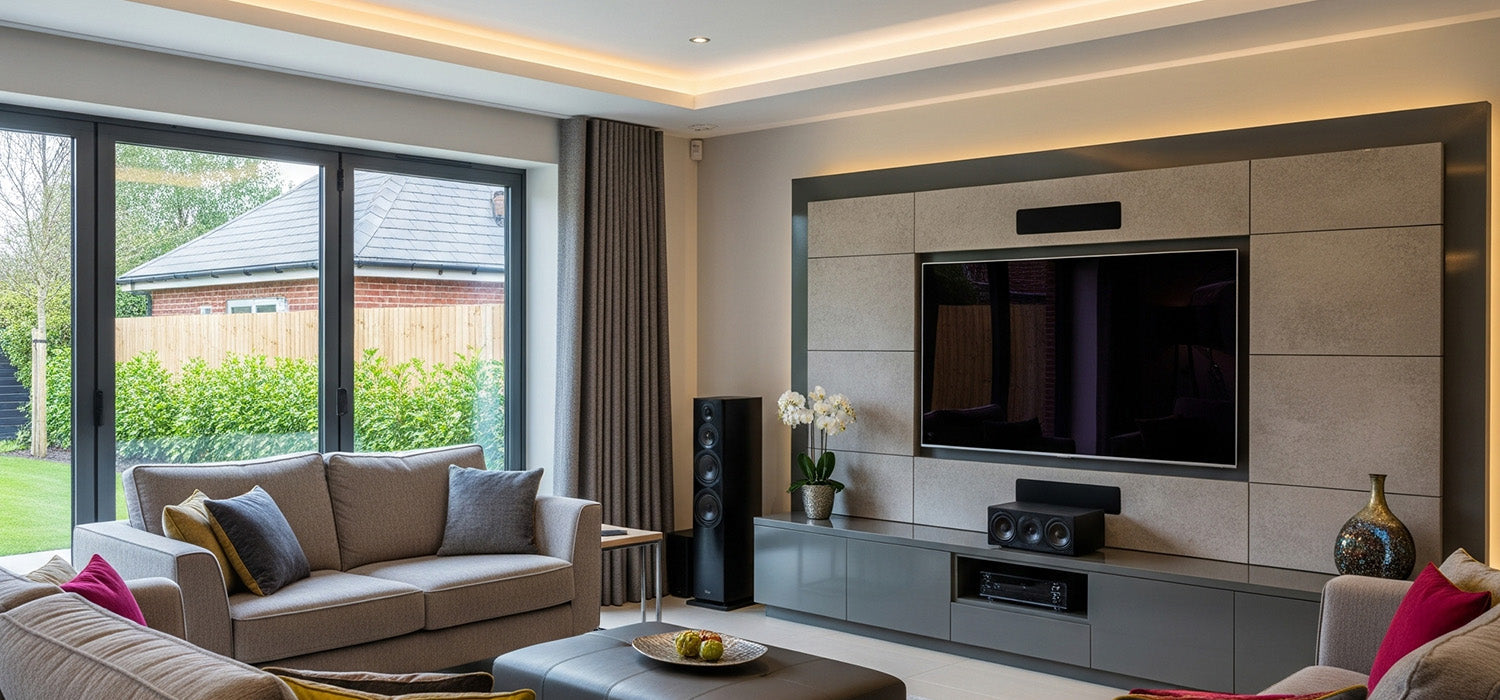
Do Media Wall Fires Actually Heat a Room? Here’s the Truth
Thinking of a Media Wall Fire as just a pretty face? Think again. Short answer: Yes, they give off heat—real, room-warming heat! From sleek electric models to flame-like gas units, these beauties blend style with function. Curious how much heat? Or which type’s best? Keep reading for the warm details.
The Short Answer: Yes, They Do!
Imagine this: it’s a cold autumn evening. You’ve just made a cup of tea, curled up on the sofa, and your media wall fire flickers beautifully in the background. But is it actually warming the room?
Yes, it is. Media wall fires aren’t just decorative—they genuinely heat your space. They’re designed to do both: look fantastic and feel warm.
How Electric Fires in Media Walls Produce Heat
Electric fires in media walls work a bit like a fan heater dressed up for a black-tie event.
Inside, there’s a heating element that warms up fast when electricity flows through it. Then a small fan pushes the warm air gently into the room. No smoke, no mess—just instant, clean heat.
And thanks to LED flame technology, you get that beautiful, flickering fire effect without actually burning anything.
How Much Heat Do They Produce? (Watts and BTUs Explained)
Electric media wall fires typically output between 1 to 2 kilowatts (kW). In more relatable terms, that’s around 3,400 to 6,800 BTUs.
To put it in perspective:
-
A 1kW unit can comfortably warm a small room or snug.
-
A 2kW unit is enough to take the chill off most average-sized British living rooms.
They’re a solid match for day-to-day home heating.
Are They an Efficient Way to Heat a Room?
Actually, yes—they’re surprisingly efficient.
Electric fires convert virtually 100% of electricity into heat, so there’s no waste. No chimney or vent means the heat stays inside. Plus, they’re quick to respond, so you’re not waiting ages to feel the warmth.
In well-insulated rooms, they can be incredibly cost-effective for spot heating.
Using Your Media Wall Fire as a Primary or Secondary Heat Source
If you live in a modern flat or have upgraded your insulation, an electric media wall fire could potentially act as your main source of heat.
But for most homes, it’s better used as a secondary heat source. Think of it as a stylish backup or top-up heater—perfect for chilly mornings or saving energy by only heating one room at a time.
Can You Use the Flame Effect Without the Heat?
The "Flame Only" Setting
Here’s one of the best features: you can switch on the flame effect without the heater.
So when it’s 26°C in July but you still want that cosy glow while watching your favourite show, the fire can still work its magic—without turning your lounge into a sauna.
Enjoying Ambience All Year Round
This makes media wall fires a year-round feature.
You get the ambiance of a roaring fire during a heatwave—or during spring evenings when the central heating is off but you still want that cosy feel.
It’s the sort of thing you’ll appreciate far more than you realise.
Safety Considerations for Heated Media Walls
Ensuring Proper Ventilation
While electric fires don’t emit fumes, they still need breathing room. Make sure there’s adequate airflow around the unit.
Blocked vents or crammed installations can reduce efficiency and, in worst-case scenarios, overheat the unit.
Manufacturer's Clearance Guidelines
Every unit comes with installation instructions, and following them is crucial—especially when placing a TV above the fire.
Manufacturers will recommend safe distances to avoid heat damage. If in doubt, ask your installer. It’s worth getting right the first time.
Controlling the Heat on Your Media Wall Fire
Thermostats and Timers
Most units have built-in thermostats to let you set the perfect room temperature.
Some also include timers, so you can schedule the fire to come on just before you wake up or get home. It’s a great way to reduce energy use without sacrificing comfort.
Smart Home Integration
Got Alexa or Google Home? Many newer models let you control the fire with your voice or smartphone app.
No need to move from your sofa—just say, “Turn on the fire,” and it’s done. Luxury living at its finest.
Frequently Asked Questions (FAQs)
Will a media wall fire heat a large room?
It depends on the unit. A standard 1–2kW fire will do a decent job in rooms up to 20m².
For bigger spaces or open-plan living, you might need a higher-wattage model or use it alongside your central heating.
How much does it cost to run the heater on an electric fire?
Roughly 30p to 50p per hour, depending on your electricity tariff.
Using the flame-only mode? That costs pennies—just enough for the LED lights. It’s a budget-friendly way to enjoy the atmosphere without the full heat.
Is the heat from an electric fire safe for my TV?
Yes, if installed correctly.
Most media wall fires are designed to direct heat outward or downward, not upwards. Just make sure you follow spacing guidelines and don’t block airflow.
Choosing the Right Media Wall Fire for Your Home
If you’re shopping for a media wall fire, focus on two key things: heat output and room size.
-
For small rooms, 1kW may be plenty.
-
For medium rooms, go for 1.5–2kW.
-
For large or open-plan rooms, consult an installer for advice.
Also, look out for eco settings, smart timers, and flame brightness controls—these features add real value.
Conclusion: The Best of Both Worlds – Ambience and Heat
Media wall fires are more than a trend—they’re a practical and stylish way to heat your home.
They offer the perfect mix of beauty and warmth, with customisable flame effects, smart features, and energy-efficient heat. Whether you’re using it as your main source or just topping up the cosiness, it’s an upgrade that looks as good as it feels.
You don’t have to choose between form and function anymore. With a Media Wall Fire, you truly get both.
Other content we think you'll love
- How to Design a Media Wall That Works and Wows
- What Can You Put in a Media Wall? The Ultimate Setup Guide
- Stylish Media Wall Ideas: How to Mix Tech with Taste
- Does a Media Wall Need Ventilation? Everything You Need to Know
- How to Dress a Media Wall: Easy Tips for Stylish Impact
- How to Paint a Media Wall Like a Pro: Step-by-Step DIY Guide
- How to Wallpaper a Media Wall: A Stylish Step-by-Step Guide
- What Fires Go in Media Walls? A Guide to the Best Electric Options
- Are Media Walls Still in Fashion? Modern Living’s Hottest Trend
- Can You Wallpaper Over a Media Wall? A Complete UK Guide
- Does a Media Wall Add Value to a Home? Here's the Real Answer
- Can You Tile a Media Wall? A Stylish Upgrade Worth Doing

